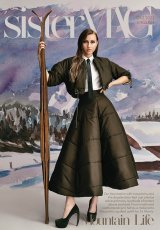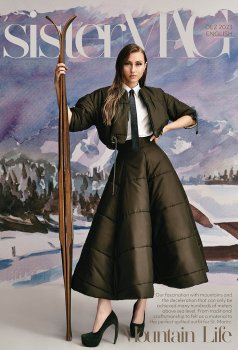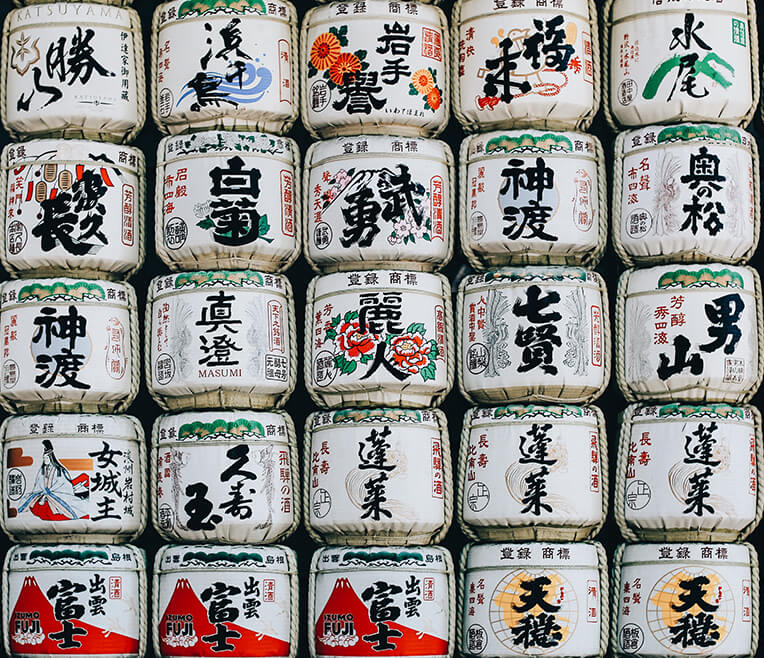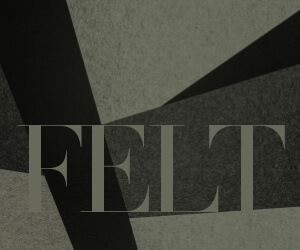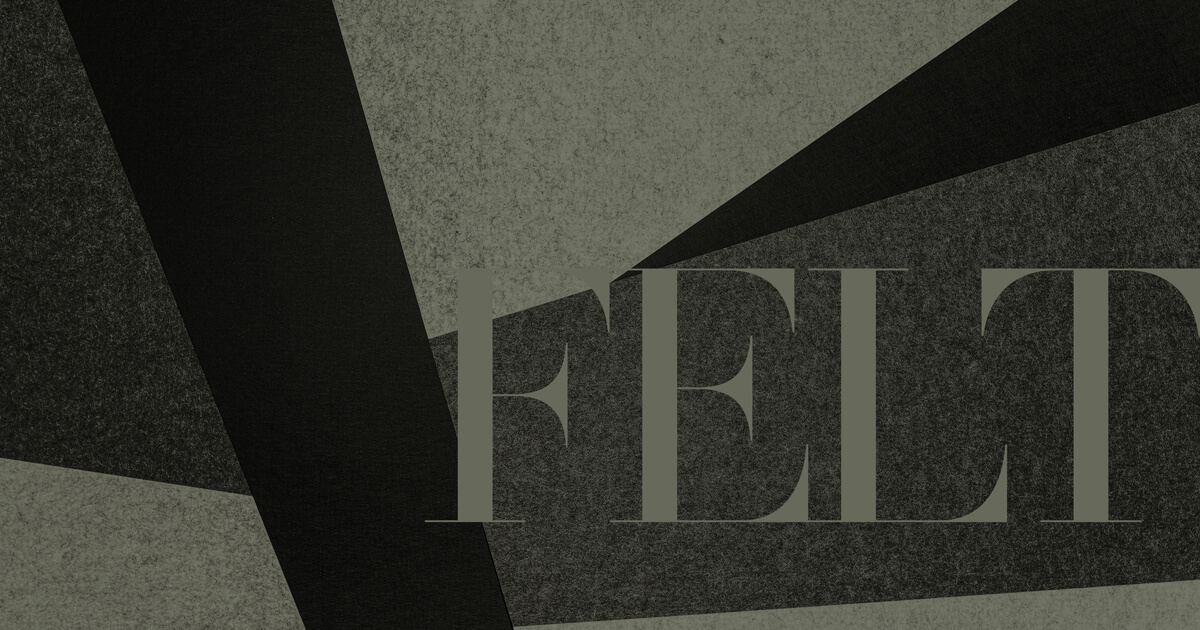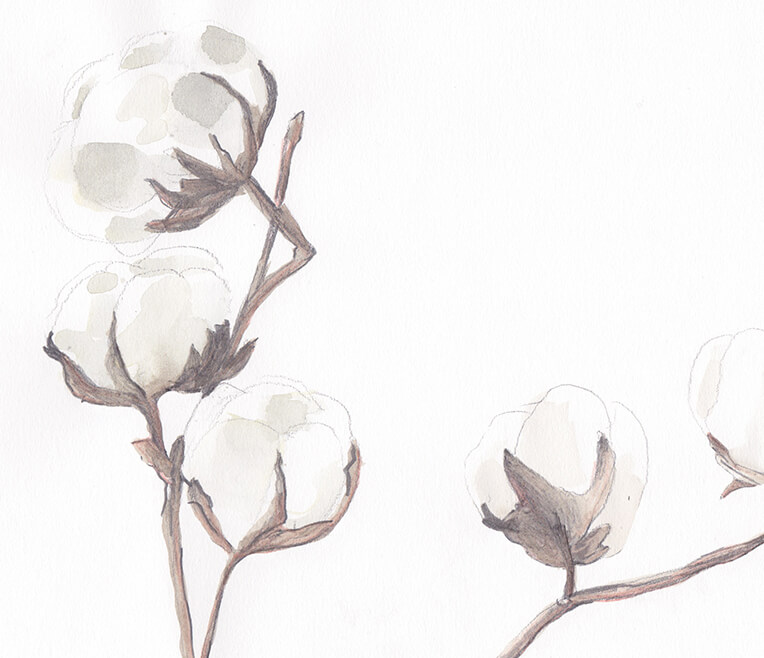
The history of felt, its production and use
What do you think of when you hear the word felt? Felt slippers, felt boots or maybe even childhood arts and crafts? Join us on a fascinating journey through the history of felt – from the earliest beginnings to modern production. You will also learn how felt, as a timeless material, has shaped the world of art, fashion and industry.
- Text: Michael Neubauer
What do we think of FELT?
The history of felt, its production and use
What do you think of when you hear the word felt? Felt slippers, felt boots or maybe even childhood arts and crafts? The mind might then stray to thoughts of matted hair, and in fact in Germany the term ‘felted’ has come to be synonymous with the word ‘corrupt’ because felt is so opaque, it’s the very opposite of transparency.
You can understand why the two concepts can be compared. You only have to take one look at the felt itself. The animal fibers aren’t woven in a structured way. All of the fibers are entangled together like interwoven power relations. Thanks to the external scales that wool fibers have and a huge amount of external pressure, they are pressed together into a solid, flat textile that’s not as distinctive as knitted or crocheted fabrics. Felt isn’t a woven fabric, it’s more like a fleece. The angular warp and weft that you typically find in woven fabrics is not found in felt. You can only wonder what’s really going on in there and what secrets it might be hiding.
In Germany, after the 15th century, the word for felt (‘Filz’) became an insult akin to ‘boorish,’ ‘course,’ or ‘clumsy.’ They were ‘course felt,’ ruffians. Frugal, stingy people were referred to as ‘meagre felt.’ The word ‘felt farmer’ also comes from times gone by and it meant ‘rough farmer’ because they protected themselves from the cold with rough, felt clothing. Felt has been around for such a long time because it has a whole host of good characteristics. It’s warm, it’s water repellent and durable, absorbent, it can protect both the head and the body, it’s insulating, and is even used in fashion for decorative purposes.
Felt is made from sheep’s wool or other animal hair and it’s often mixed with synthetic fibers during manufacturing.
The following process leads from the historical ‘wet felting’ process to the product we know today: mechanical pressure combined with steam and soapy water presses the fibers together, as well as repeatedly introducing moisture, and finally, dye. This is followed by mechanical ‘fulling’ to make the fibers and scales mix and wedge together by kneading, pressing, and pulling.
This type of manufacturing is quite old. All of these steps could, and still can, be carried out by hand. Felt can also be made by ‘dry felting.’ That is where the dry material is made into a certain shape with felting needles. Nowadays, that’s how felt is made, or, even more innovatively, with a pulsed water jet.
Felt is easy to care for because the dense structure of the fibers makes it difficult for dirt or liquid to get through. Vacuuming, brushing, or washing with different detergents can help, depending on how much cleaning it needs. You can also iron or dry clean it. But felt also has a natural enemy: the moth! Moths will create really annoying holes in the fabric if you let them.
Felt-like fabric was found in Turkey that was likely manufactured as early as 2600 BC. Felt was then used throughout time and spread far and wide as evidenced by discoveries in Pompeii, Mongolia and in the high peaks of Tibet. As well as for clothing, felt was used to create yurts and tents. Over the years, felt became a tried and tested textile, especially when it came to keeping warm. Its versatility led to its range of uses expanding rapidly. It was used for clothing, hats, scarves, traditional clothing, boots, slippers, and bags as well as technical applications. No matter whether used as insulation against cold or noise, lubricant, sealant, as a gas filter, or even as polishing felt, felt is indispensable in manufacturing. Felt is also popular as a table decoration such as for a dinner set or a table runner.
This means there are so many different possibilities for creative, individual ideas for crafting with felt. Bags, coasters, patches, or egg cozies – with patience, practice, and love, you can make almost anything out of felt. Here www.filzshop24.de you can order small quantities of felt in all kinds of shapes and colors. You can find crafting ideas here: https://www.handmadekultur.de/projekte/filz.
Art is more within reach than you think. None other than Joseph Beuys (1921 – 1986) who, on the subject, famously said, “Every human being is an artist,” not only wore his trademark felt hat, but he also used it as an artistic medium.
Its use in fashion is almost more important and significant. There is almost no type of clothing that cannot be made from felt – it’s modern, comes in all colors and is comfortable to wear. Felt is also important in fashion accessories. At the moment, skirts are trimmed with floral patterns made of silk, jacquard, batiste, English leather, satin, percale, taffeta or even felt. Felt patches, neutral and bold, have been around for some time, as have felt bags, mobile phone covers or muffs.
This begs the question, “What is more versatile than felt?” But the fact that it has served people well for thousands of years answers this question with a confident “Next to nothing!”

